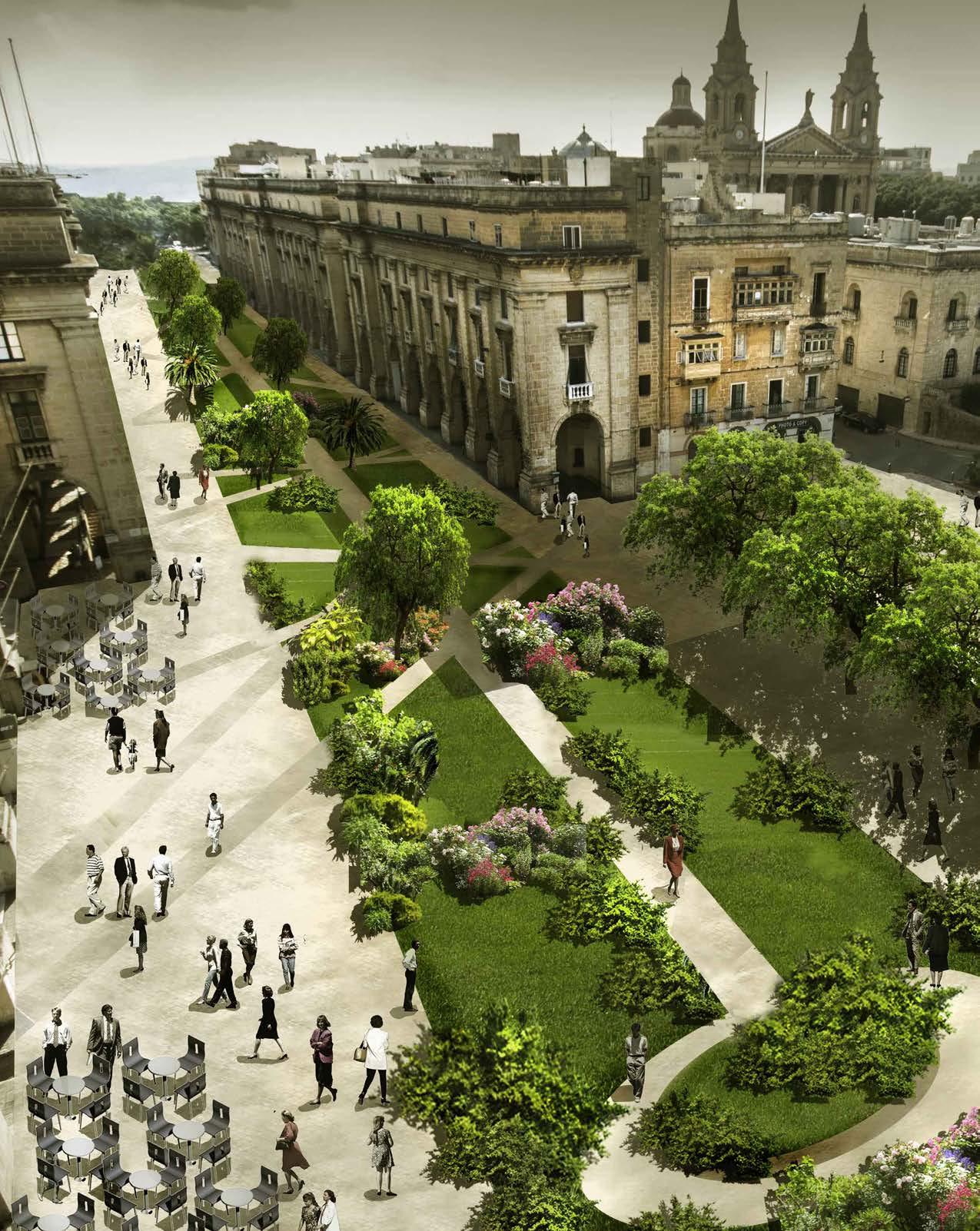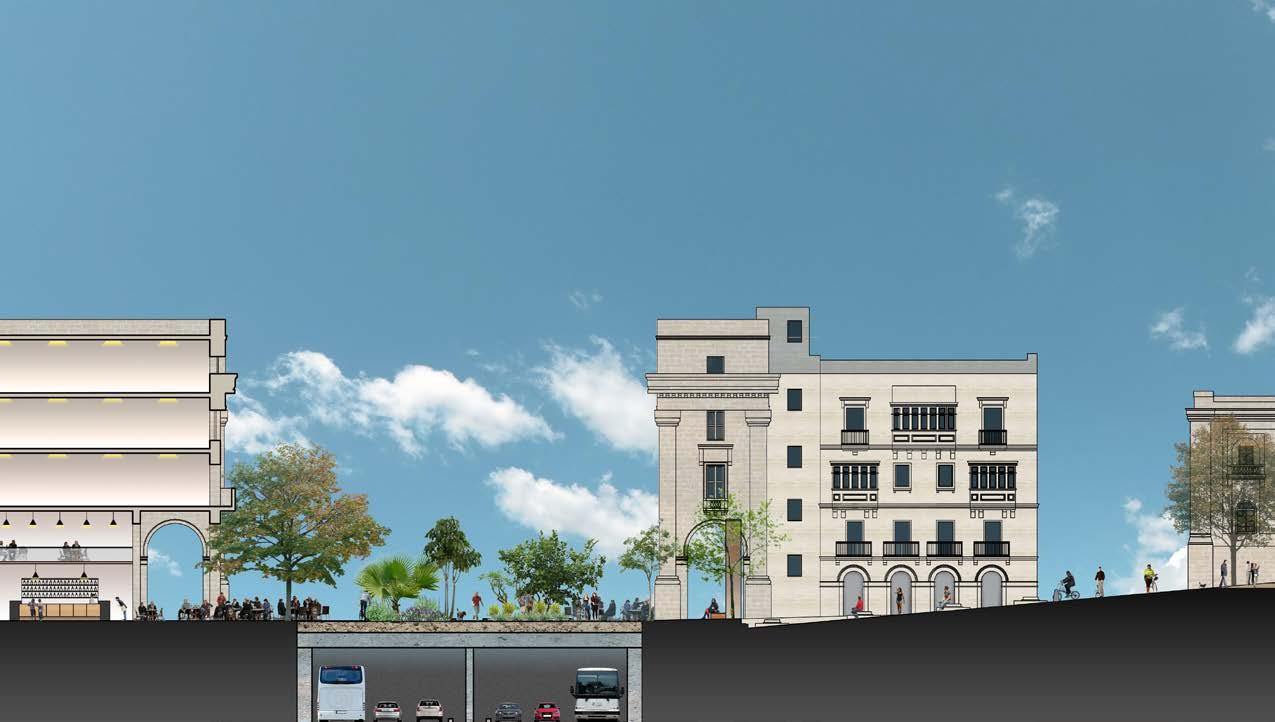
6 minute read
Ian Camilleri
from Atelier No_10
by Union Print
Reflections on Sustainability
INTERVIEW WITH IAN
Advertisement
CAMILLERI
The current state of global development poses new challenges to the architectural profession: it must transform and adapt itself in order to ensure a role with greater relevance in the search for effective sustainable solutions. The need for sustainable considerations is also high on the agenda of local architects who are called to strive to create buildings and communities that will neither deplete natural resources nor negatively impact the earth's functioning. The goal is to meet today's needs using renewable resources so that the needs of future generations will be provided for. We recently spoke to Ian Camilleri, partner at DHI Periti to learn more about the firm’s stance on sustainable architecture, and why they feel it is so important that the topic should be high on Malta's agenda.
How do you feel sustainability is progressing in the market and among professionals?
We all know that the definition of Sustainability is: “avoidance of the depletion of natural resources in order to maintain an ecological balance”.
High demand for housing leads to subsequent rises in property prices, which can easily overshadow the environment respect.
Care must be taken to make sure that homes remain affordable and urban green zones do not become rich enclaves.
The issue comes when depletion and money-gaining enter into conflict and there is no legislation able to regulate it.
From a developer’s view it is more profitable to opt for something which is cheaper and quicker which usually as a result unfortunately does is no in line with sustainable planning. The only way to promote sustainability is by including it into our legislation. In this manner all developments would need to follow through.
From a professional point of view, everyone is aware of the importance of sustainability although at the end of the day it is your client that choses.
What do you feel is the greatest challenge when it comes to designing for environmental sustainability?
The greatest challenge is managing to follow and accomplish the main definition as mentioned above meaning: respecting the history of the environment, giving importance to social landmarks where the community can identify itself and feel oriented and balancing the solids and voids in the cities and giving to the communities their spaces back.
What is needed to move the mainstream toward sustainable buildings?
Architecture is not the design of THAT ONE building that the architect would be designing. It is the holistic approach.
The definition of architecture has moved at the end of 1960 to the entire city with the writings of Aldo Rossi “The Architecture of the City”. This is an important book within the urbanism literature, where buildings and open spaces play an important role together to represent the city.

One of the main crucial aspect of this book is that the people are the main actors of the architectural process that together are going to use those spaces/buildings. The people are the main users.
Michael Pawlyn of Architects Declare recently noted, "Architects must urgently go beyond creating sustainable architecture that minimises damage to the planet and design buildings that help repair it." To what extent do you agree? He also points out, "We're at a pretty dramatic time in history, where if we continue with our view of nature as something to be conquered and plundered, then we're in deep trouble as a species." What are your thoughts?
Unfortunately this is the thought we are living in. Deep down everyone knows it although we are all in denial. We are comfortable with our lift style and as a society we are scared of change.
Passive design is what we have inherited from the past. We must re-introduce and use it as our main tool in our designs: natural ventilation, use of materials and their properties, take advantages from the orientation and the shape of the buildings.
Why has your proposed project to convert Floriana’s main avenue, St Anne’s Street, into a garden such generated so much public interest?
I believe that one of the main reasons that this project has generated so much interest is because the people are craving something new.
Apart from this, the project overall would be one of a kind where we will change one of the most polluted roads within a country into a place of leisure/relaxation, to be used by the people apart from the positive message a project like this sends out.
The project was launched in 2014. Why do you feel the project has not reached implementation stage?
If this project is ever to happen, this would be a Government Project of course. The Government does what he thinks is right at that point in time. Possibly before the Government was focusing on other projects when now could be the right time.



Is Malta still missing the point on sustainable buildings?
Malta is missing a general overview, it is missing a holistic strategy for a sustainable living.
Voids are being filled both physical and perceptive, drastically reducing the spaces where people can naturally meet up.
A building is not a box that you design irrespective of your neighbour’s building.
A sustainable building is a machine where all components work together to achieve the result, while ensuring high level of thermal comfort.
The balance between buildings and green public spaces play an important role for the wellbeing of a society.
A green city improves urban life with people likely to exercise more and a reduction in anti-social behaviour and crime. It can also help meet the challenges of climate change.
A green city has major gains even under an economic point of you.
What should be done for a clear green strategy?
The strategy should have a wide view of all the island. The plan should also include steps to make private and public transport completely green. This could include replacing carbon-producing transport system with zeroemission vehicles and providing ample infrastructure such as dedicated lanes and charging stations for electric vehicles.
While adopting such interventions, it is important to keep citizens’ daily needs in mind to avoid adding extra burdens on them. If motor traffic is to be limited, the availability of public transport must be considered, safe infrastructure for walking and cycling as well as adequate road structure for essential services or deliveries.
Green city initiatives need to be long-term – and created with the support of local people. Recognition of the benefits of green living and informed support of developments will result in positive behaviour changes by the citizens
What is the team's ultimate goal when it comes to its projects?
Our goal is to implement it not for any personal gain but for the country. St. Anne Street. was a road made for the people. It was a place where people gathered as well as a commercial hub. Over the years it become an arterial road that led to Valletta.
We would like to see this road be given back to the people. Also, in this way Floriana will become one again, as today it is split in two, apart from the enormous economical /social / health gain our country will benefit from.
What do you want to be remembered for?
As an architect, the best way to be remember is for having suggested a project to create a void instead of a solid.







